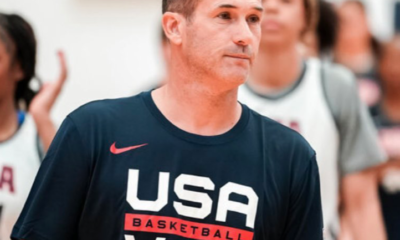Regional
New Ability to Transfer
Editor: The following is a portion of a press release from NCAA.org.
Beginning in October, Division I student-athletes will have the ability to transfer to a different school and receive a scholarship without asking their current school for permission.
The Division I Council adopted a proposal this week that creates a new “notification-of-transfer” model. This new system allows a student to inform his or her current school of a desire to transfer, then requires that school to enter the student’s name into a national transfer database within two business days. Once the student-athlete’s name is in the database, other coaches are free to contact that individual.

Justin Sell – ncaa.org
“The membership showed today that it supports this significant change in transfer rules,” said Justin Sell, chair of the Division I Transfer Working Group and athletics director at South Dakota State. “I’m proud of the effort the Transfer Working Group put forth to make this happen for student-athletes, coaches and schools.”
The previous transfer rule, which required student-athletes to get permission from their current school to contact another school before they can receive a scholarship after transfer, was intended to discourage coaches from recruiting student-athletes from other Division I schools. The rule change ends the controversial practice in which some coaches or administrators would prevent students from having contact with specific schools. Conferences, however, still can make rules that are more restrictive than the national rule.
Additionally, the proposal adds tampering with a current student-athlete at another school to the list of potential Level 2 violations, considered a significant breach of conduct.
Nicholas Clark, a recent graduate of and former football player at Coastal Carolina who represents the Division I Student-Athlete Advisory Committee on the Council, said the rule change promotes fairness and the well-being of college athletes.
“This creates a safe place for student-athletes to have a conversation with their coaches and makes the whole process more transparent,” Clark said. “This will clean the process up and give more influence and flexibility to the student-athlete.”
The Transfer Working Group first introduced the proposal in fall 2017, aiming to detach a student-athlete’s pursuit of transferring to a different school from the process of receiving a scholarship at the new college or university. The new rule was developed based on a series of principles the Division I Board of Directors developed for the working group, including any rule changes should support the academic success of student-athletes, be based on data and create the least restrictive environment possible for student-athletes.











